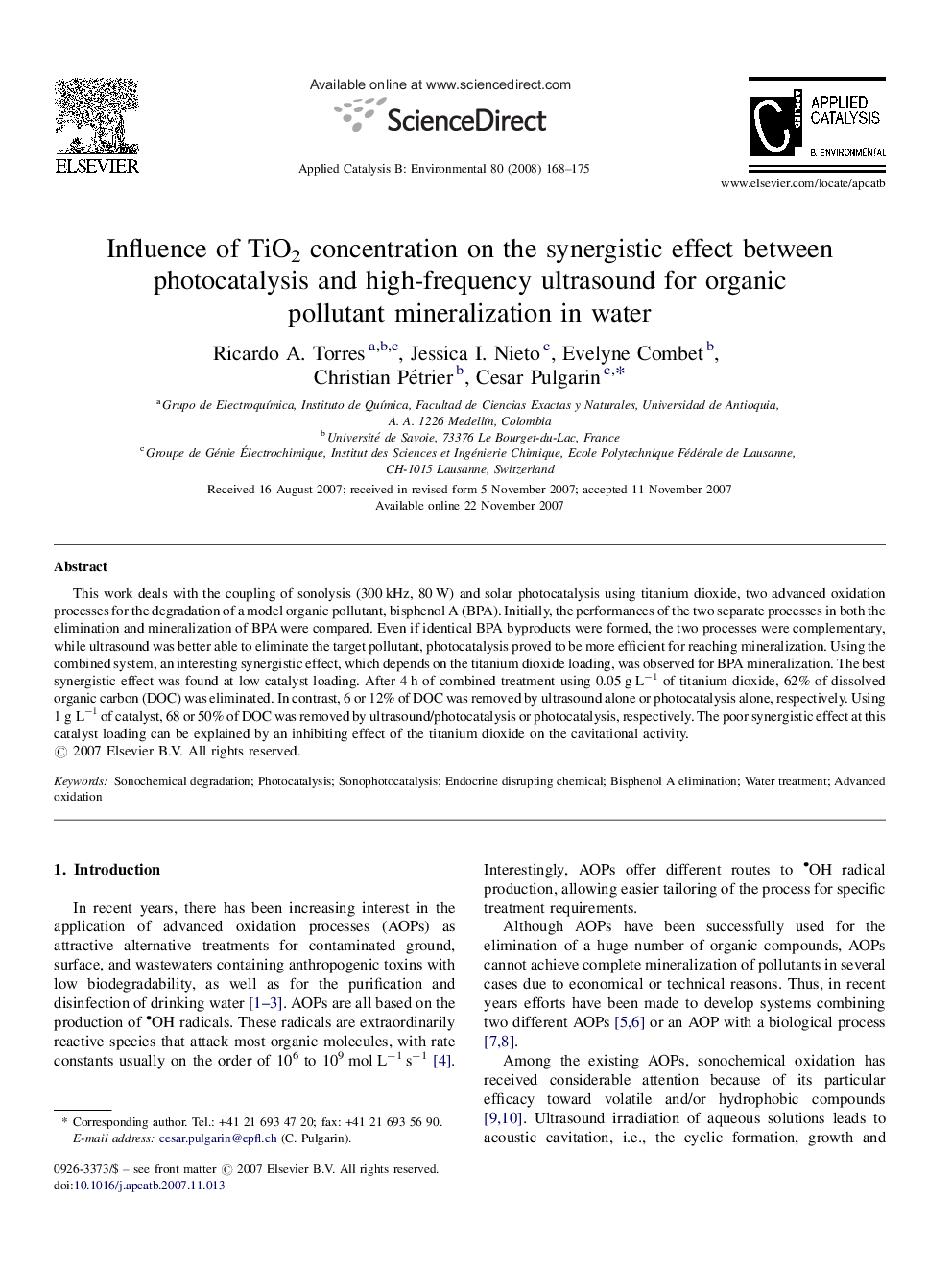| Article ID | Journal | Published Year | Pages | File Type |
|---|---|---|---|---|
| 48364 | Applied Catalysis B: Environmental | 2008 | 8 Pages |
This work deals with the coupling of sonolysis (300 kHz, 80 W) and solar photocatalysis using titanium dioxide, two advanced oxidation processes for the degradation of a model organic pollutant, bisphenol A (BPA). Initially, the performances of the two separate processes in both the elimination and mineralization of BPA were compared. Even if identical BPA byproducts were formed, the two processes were complementary, while ultrasound was better able to eliminate the target pollutant, photocatalysis proved to be more efficient for reaching mineralization. Using the combined system, an interesting synergistic effect, which depends on the titanium dioxide loading, was observed for BPA mineralization. The best synergistic effect was found at low catalyst loading. After 4 h of combined treatment using 0.05 g L−1 of titanium dioxide, 62% of dissolved organic carbon (DOC) was eliminated. In contrast, 6 or 12% of DOC was removed by ultrasound alone or photocatalysis alone, respectively. Using 1 g L−1 of catalyst, 68 or 50% of DOC was removed by ultrasound/photocatalysis or photocatalysis, respectively. The poor synergistic effect at this catalyst loading can be explained by an inhibiting effect of the titanium dioxide on the cavitational activity.
